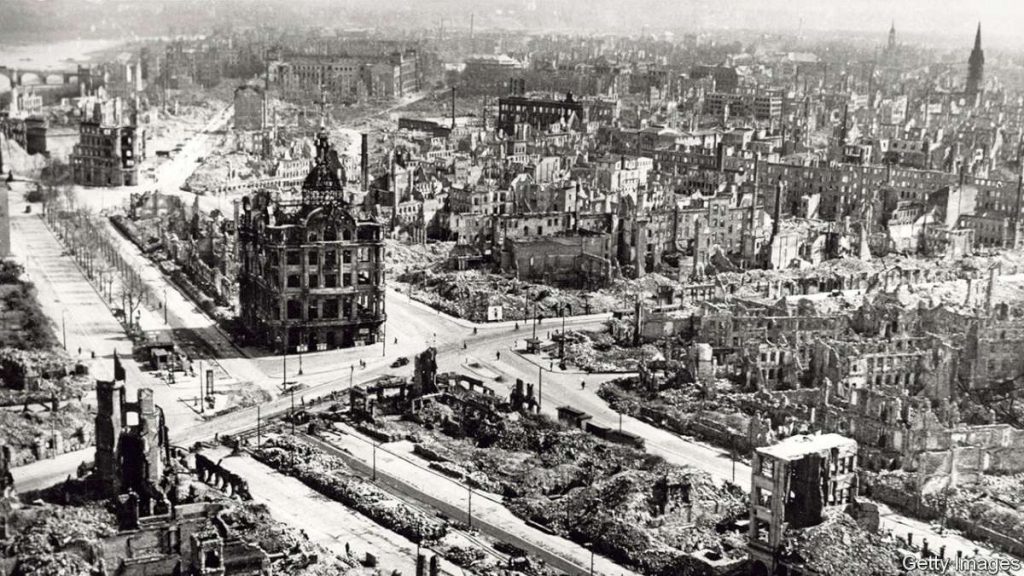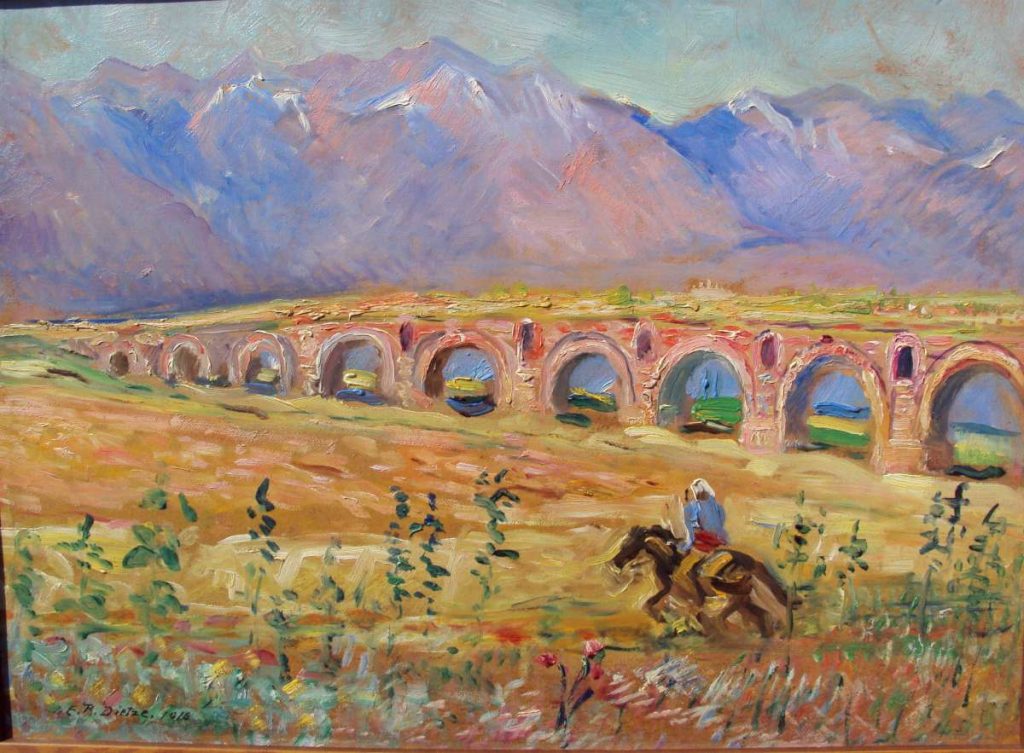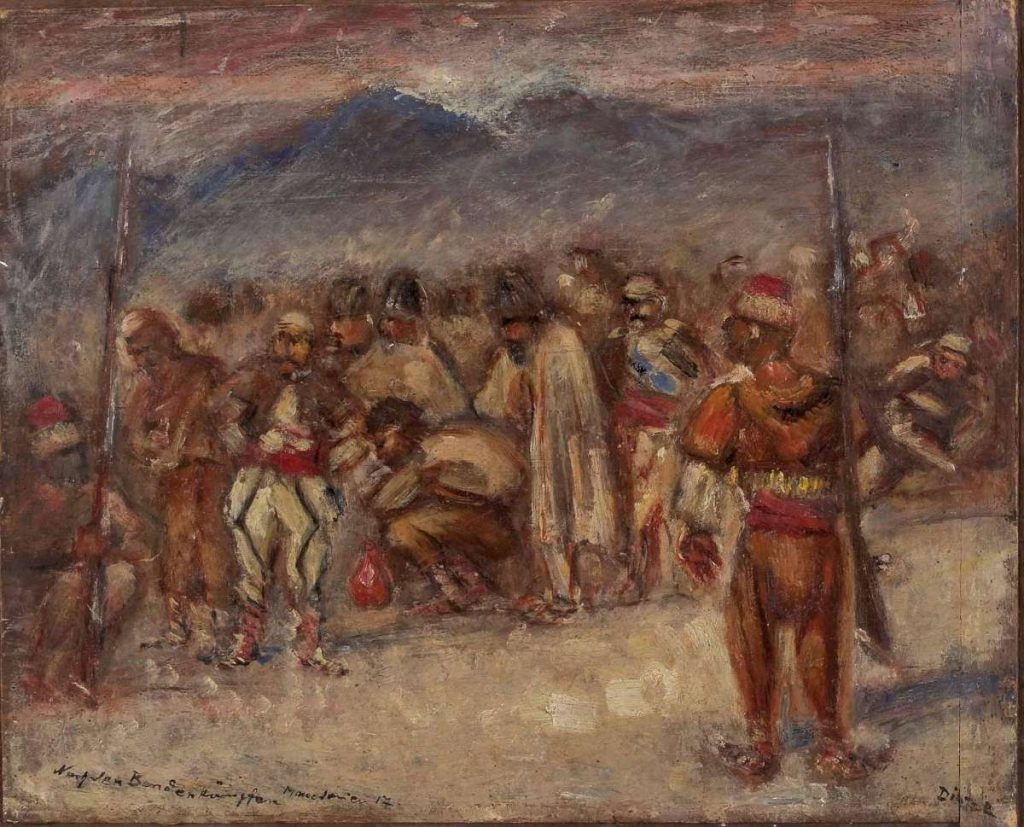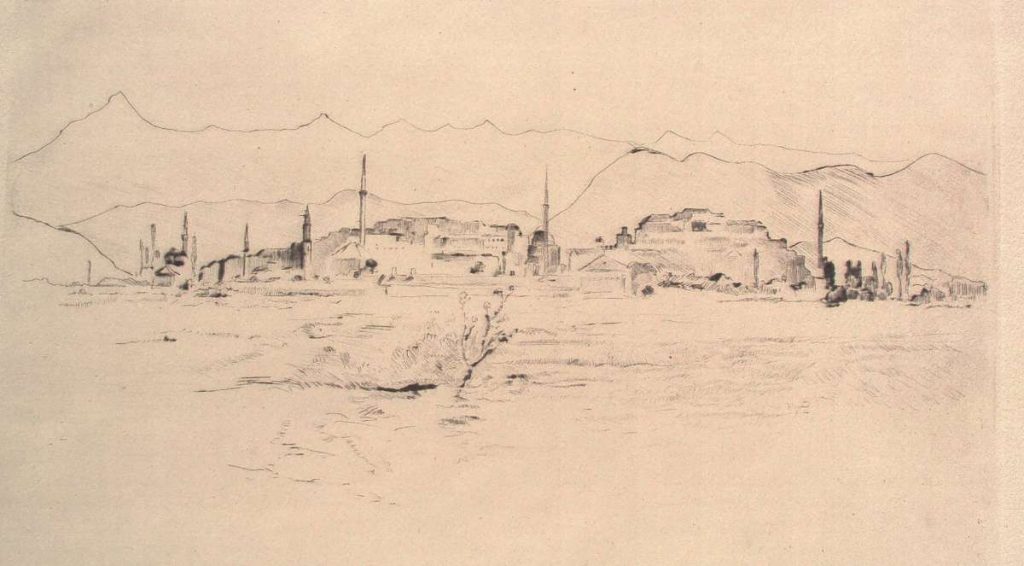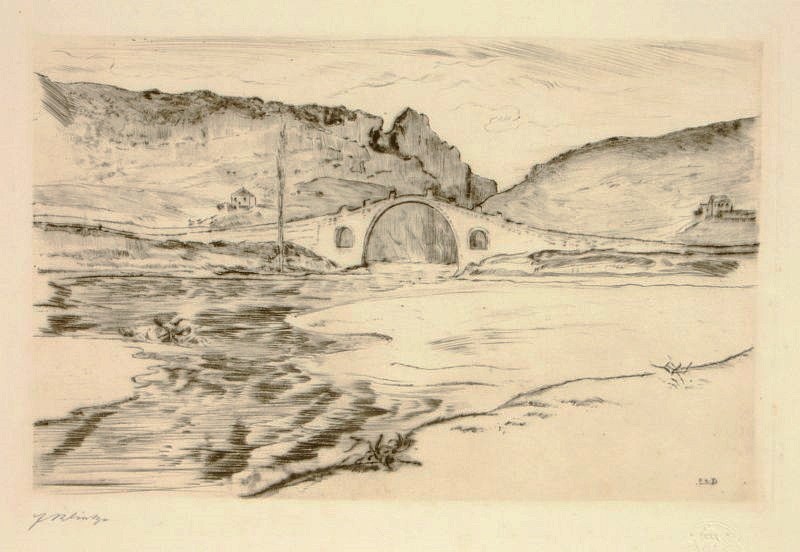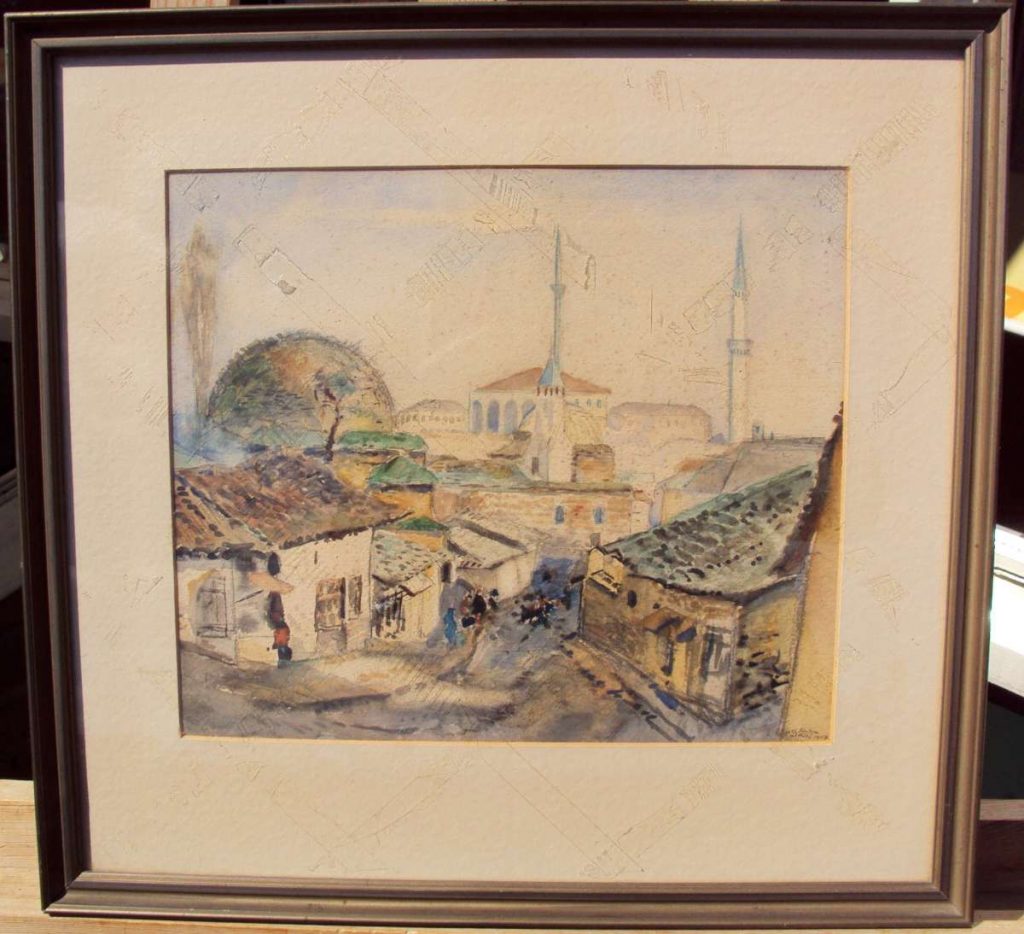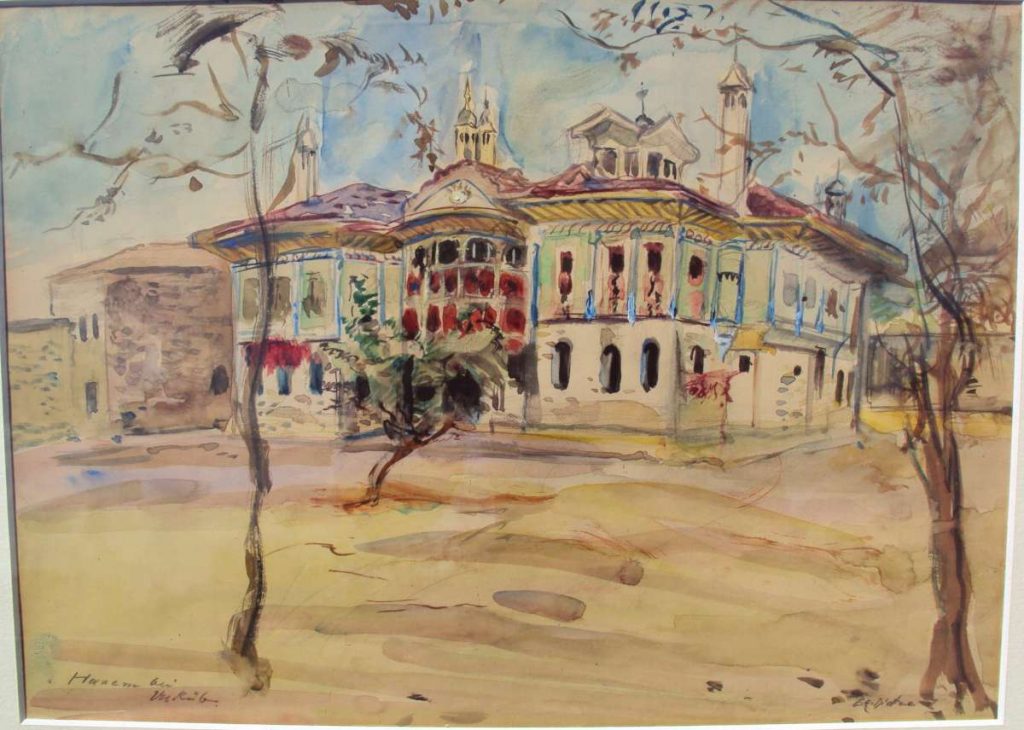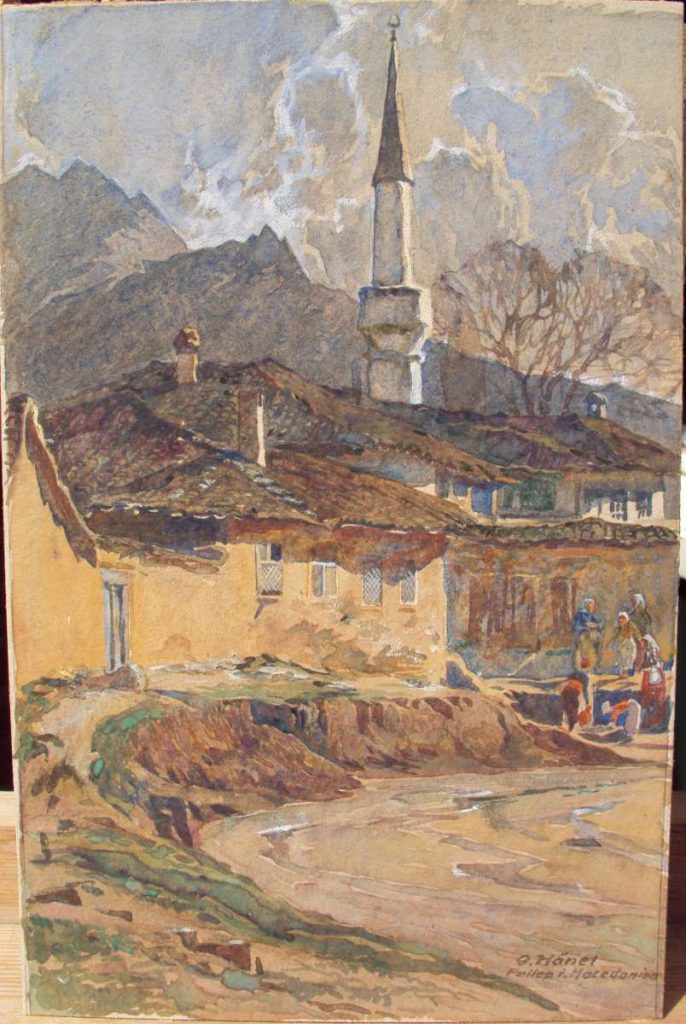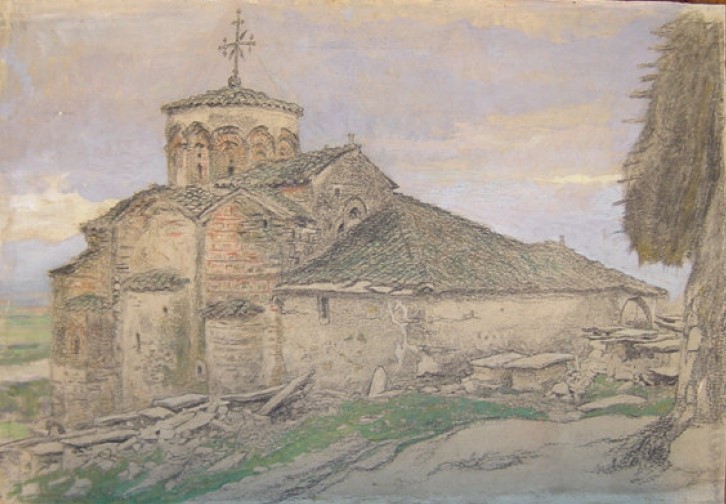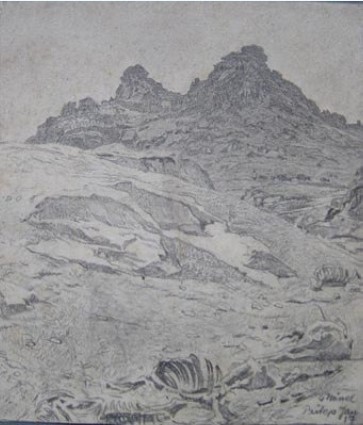According to official numbers from 2010 report from the city of Dresden there we between 22700 and 25 000 dead in these two days. Unofficial numbers go above 135 000, because the refugees were not counted as citizen of Dresden.
One of the victims of this inferno of fire was the studio of the well-known Dresden impressionist Ernst Richard Dietze (1880-1961), He was educated at the Dresden Academy of Art, Paris, Munich and Berlin, and later was a teacher at the Malsaal academy. During the World War One, E.R. Dietze was a German war painter and travelled with German troops through Macedonia in the period of 1916-1918.
In this great firestorm, almost all his paintings and drawings were destroyed. The remaining few are today in the collection of the Dresden Art Museum. Fortunately I managed to discover three oil paintings (Viaduct of Ushkub 1916; Bandits camp 1916 and March of the German Troops near Dojran 1917) , two watercolors (Turkish market and Harem in Skopje) and two etchings (Skopje and Radika bridge) and add them in my collection. But I wonder how many other works from Macedonia were lost in that fire.
The horror of Dresden continued until April 1945. More air attacks and more bombing. The US Eighth Air Force dropped 2,800 more tons of bombs on Dresden in three other attacks before the war’s end. On 5th of April, Russian Marshal Zhukov started the final offensive of capturing Dresden. There was a little resistance, yet there was a great chaos on the Dresden streets.
On 17 April 1945, in the very last minutes of the Dresden offensive, a strained bullet killed Dresden painter Georg Hänel (1879 – 1945). He was a student of Dresden Fine Art academy and known for his idyllic paintings of animals and portraits. Int he World War One, he was a war painter of German Army in Macedonia, where he was making drawings that were published in the German magazines in the period 1916-17. Not many of his Macedonian paintings survived the Dresden destruction. Few of his Macedonian works are today in the collection of the Dresden city Gallery (Macedonian Tobacco worker), few in the collection of her granddaughter Mrs. Christine Hänel who lives in South Africa (sketches and drawings from Prilep) and one in my collection ( Prilep , women at water well 1918). The watercolors and drawings of Hänel are specific with their incredible level of details and masterful capture of light.
Like the loss of the studio of E.R. Dietze, one can only wonder how many more Macedonian works of art are lost on that chaos of Dresden?
